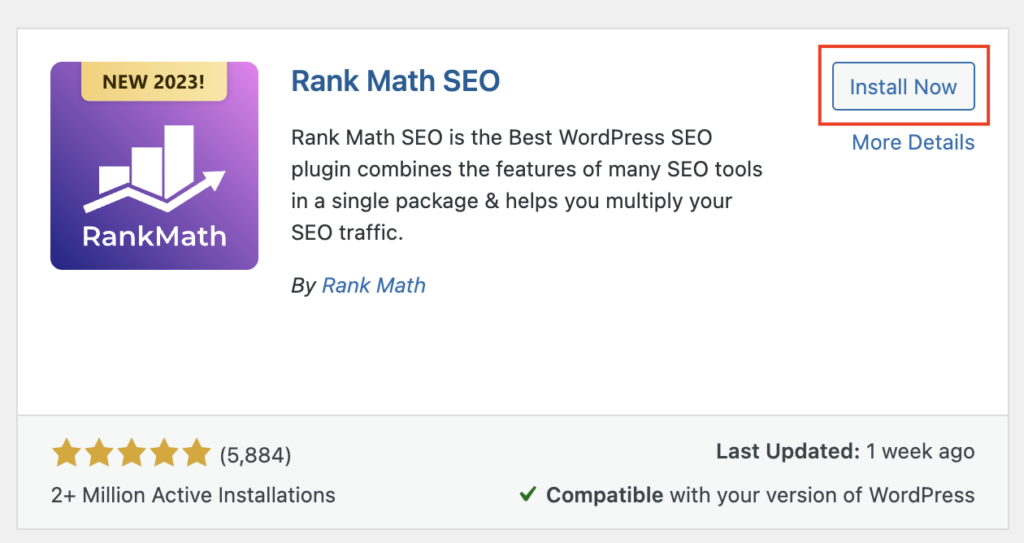

Do you find it difficult to create content for SEO? If I showed you how to optimize content for search engines, would you be interested?
If the answer to that question is affirmative, then welcome. You’re about to learn my straightforward, step-by-step procedure for using the Rank Math SEO plugin to optimize my blog post for SEO.
What is SEO and Content Marketing?
Increasing a website’s visibility on search engine result pages (SERPs) is the goal of the digital marketing tactic known as search engine optimization (SEO). In order to make a website more appealing to search engines like Google, Bing, and Yahoo, it involves optimizing a variety of website components, including its content.
Contrarily, content marketing is a strategic marketing strategy that focuses on producing and sharing useful, pertinent, and consistent content in order to draw in and keep a target audience that has been clearly defined. Driving profitable customer behavior is the objective.
When used together, SEO and content marketing can be a potent tool for driving traffic to your website and turning browsers into paying customers. In addition to appearing higher in search results, content that has been optimized for SEO also offers a better user experience, which may increase conversion rates.
How Does Content For SEO Optimization Work?
The process of making the content on your website more appealing, practical, and actionable for users is known as content optimization. It involves methods like keyword optimization, readability improvement, and meta tag addition, among others. The objective is to make your content as appealing to search engines and your audience as you can.
Why Should I Optimize Content for SEO?
For many reasons, it is essential to optimize content for SEO. The first benefit is that it raises your website’s SERP ranking. More visibility from higher rankings can result in an increase in website traffic. Second, SEO-optimized content increases the likelihood of conversions by being more likely to engage and keep visitors on the page. Finally, it can support the development of your brand’s authority and credibility within your sector.
How does Rank Math help with content optimization?
The process of optimizing your content for SEO is made easier by the WordPress SEO plugin Rank Math. It provides a complete set of SEO tools, including support for rich snippets, keyword tracking, and content analysis. Rank Math can help you optimize your content more successfully and effectively thanks to its user-friendly interface and sophisticated features.
How Content Analysis Works with Rank Math
A thorough analysis of your content’s SEO strength is provided by Rank Math’s content analysis feature. A score out of 100 is given after your content is compared to a list of predefined SEO criteria. The better your content is optimized for SEO, the higher the score.
The criteria include the use of keywords, readability, meta tags, and other factors. Rank Math also offers practical suggestions for enhancing the SEO ranking of your content.
7 Steps to Optimizing Your Content for SEO with Rank Math
Without a doubt, content optimization offers many advantages. However, putting effective SEO strategies into practice takes time and is also complicated. Rank Math SEO can help with this.
Step 1: Install Rank Math SEO Plugin
Installing and activating the plugin on your WordPress site is the first step in using Rank Math to optimize your content. You can do this by visiting your WordPress dashboard, selecting “Plugins,” then “Add New,” and typing “Rank Math” into the search bar. After selecting “Install Now,” select “Activate.”

Step 2: Perform Keyword Research
To find out what keywords your target audience is using to search for information related to your topic, you should conduct keyword research before you begin writing your content. To do this, you can use programs like SEMrush or Google Keyword Planner. You can use your keywords in your content once you’ve identified them.
Step 3: Create Your Content
You can begin writing your content now that you have your keywords. Keep in mind to concentrate on offering your audience value. Create content that is interesting to read, relevant to your keywords, and informative.
Step 4: Choose Your Focus Keyword
Setting your focus keyword in Rank Math is required after creating your content. Your content is primarily focusing on this keyword. This keyword will be examined and optimized by Rank Math for your content.
Step 5: Optimize Your Post URL, Title, and Meta Tags
Next, you need to optimize your post URL, title, and meta tags. Your URL should be short and include your focus keyword. Your title should be catchy and also include your focus keyword. Your meta description should provide a brief summary of your content and include your focus keyword as well.
Step 6: Optimize Your Content for SEO (Style and Readability)
Rank Math also evaluates the readability and style of your writing. It advises writing concise sentences and paragraphs, breaking up your content with subheadings, and enhancing reader engagement with images.
Step 7: Insert Internal and External Links
Finally, you should add internal and external links to your content. Internal links are links that point to other pages on your website, while external links are links that point to other websites. Both types of links can help improve your content for SEO.
How Much Is a Good RankMath Score?
A Rank Math score of 70 or higher is generally regarded as being excellent. It’s crucial to remember that a high Rank Math score does not necessarily translate into a high SERP ranking. Other elements, including the general SEO of your website, your competition, and the caliber of your content, are also important.
Summary
Optimizing your content for SEO is crucial for improving your website’s visibility and driving more traffic. With Rank Math, you can easily and efficiently optimize your content for SEO. By following the steps outlined in this guide, you can start leveraging the power of Rank Math to boost your SEO and achieve your digital marketing goals.

Comments (1)